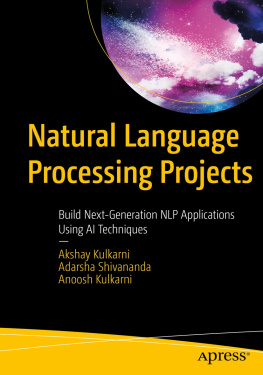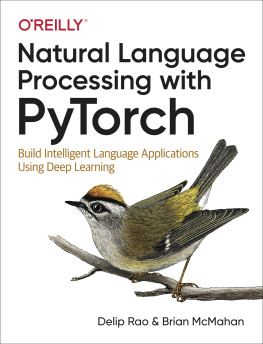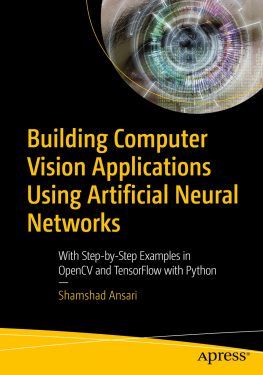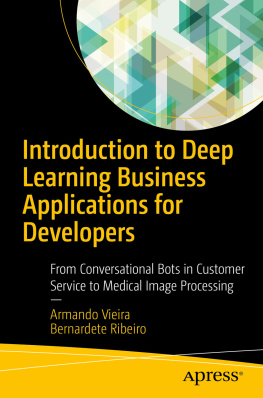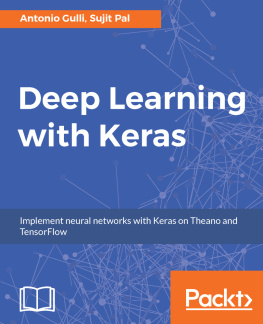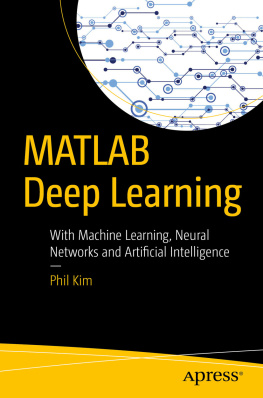Apress L.P. - Introduction to deep learning business applications for developers: from conversational bots in customer service to medical image processing
Here you can read online Apress L.P. - Introduction to deep learning business applications for developers: from conversational bots in customer service to medical image processing full text of the book (entire story) in english for free. Download pdf and epub, get meaning, cover and reviews about this ebook. City: New York;Berkeley;CA, year: 2018, publisher: Apress, genre: Home and family. Description of the work, (preface) as well as reviews are available. Best literature library LitArk.com created for fans of good reading and offers a wide selection of genres:
Romance novel
Science fiction
Adventure
Detective
Science
History
Home and family
Prose
Art
Politics
Computer
Non-fiction
Religion
Business
Children
Humor
Choose a favorite category and find really read worthwhile books. Enjoy immersion in the world of imagination, feel the emotions of the characters or learn something new for yourself, make an fascinating discovery.
- Book:Introduction to deep learning business applications for developers: from conversational bots in customer service to medical image processing
- Author:
- Publisher:Apress
- Genre:
- Year:2018
- City:New York;Berkeley;CA
- Rating:3 / 5
- Favourites:Add to favourites
- Your mark:
Introduction to deep learning business applications for developers: from conversational bots in customer service to medical image processing: summary, description and annotation
We offer to read an annotation, description, summary or preface (depends on what the author of the book "Introduction to deep learning business applications for developers: from conversational bots in customer service to medical image processing" wrote himself). If you haven't found the necessary information about the book — write in the comments, we will try to find it.
An Introduction to Deep Learning Business Applications for Developerscovers some common DL algorithms such as content-based recommendation algorithms and natural language processing. Youll explore examples, such as video prediction with fully convolutional neural networks (FCNN) and residual neural networks (ResNets). You will also see applications of DL for controlling robotics, exploring the DeepQ learning algorithm with Monte Carlo Tree search (used to beat humans in the game of Go), and modeling for financial risk assessment. There will also be mention of the powerful set of algorithms called Generative Adversarial Neural networks (GANs) that can be applied for image colorization, image completion, and style transfer.
After reading this book you will have an overview of the exciting field of deep neural networks and an understanding of most of the major applications of deep learning. The book contains some coding examples, tricks, and insights on how to train deep learning models using the Keras framework.
What You Will Learn
Find out about deep learning and why it is so powerful
Work with the major algorithms available to train deep learning models
See the major breakthroughs in terms of applications of deep learning
Run simple examples with a selection of deep learning libraries
Discover the areas of impact of deep learning in business
Who This Book Is ForData scientists, entrepreneurs, and business developers.
Apress L.P.: author's other books
Who wrote Introduction to deep learning business applications for developers: from conversational bots in customer service to medical image processing? Find out the surname, the name of the author of the book and a list of all author's works by series.


